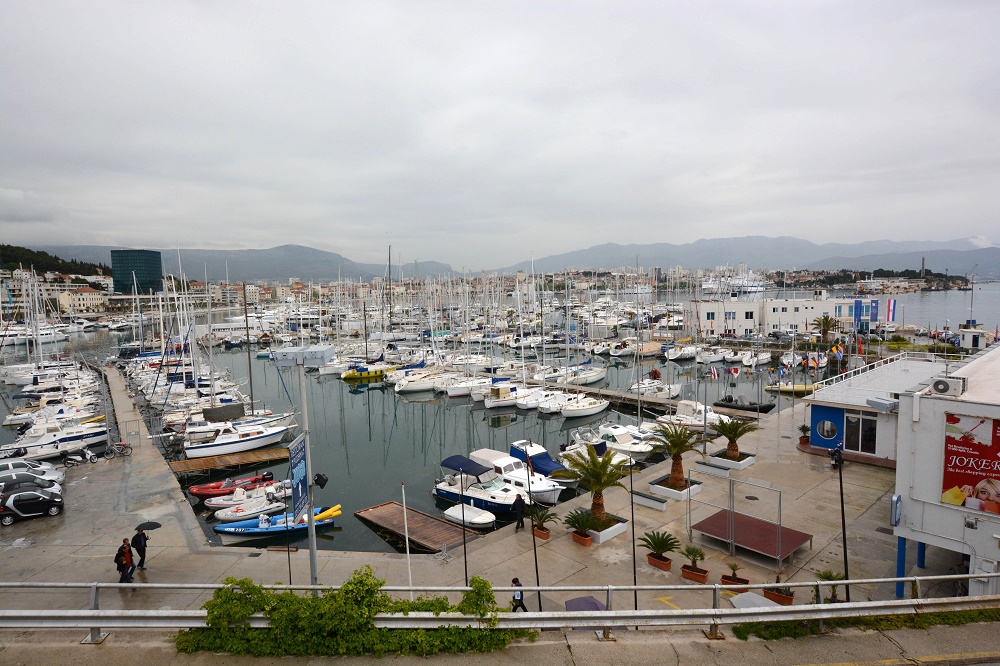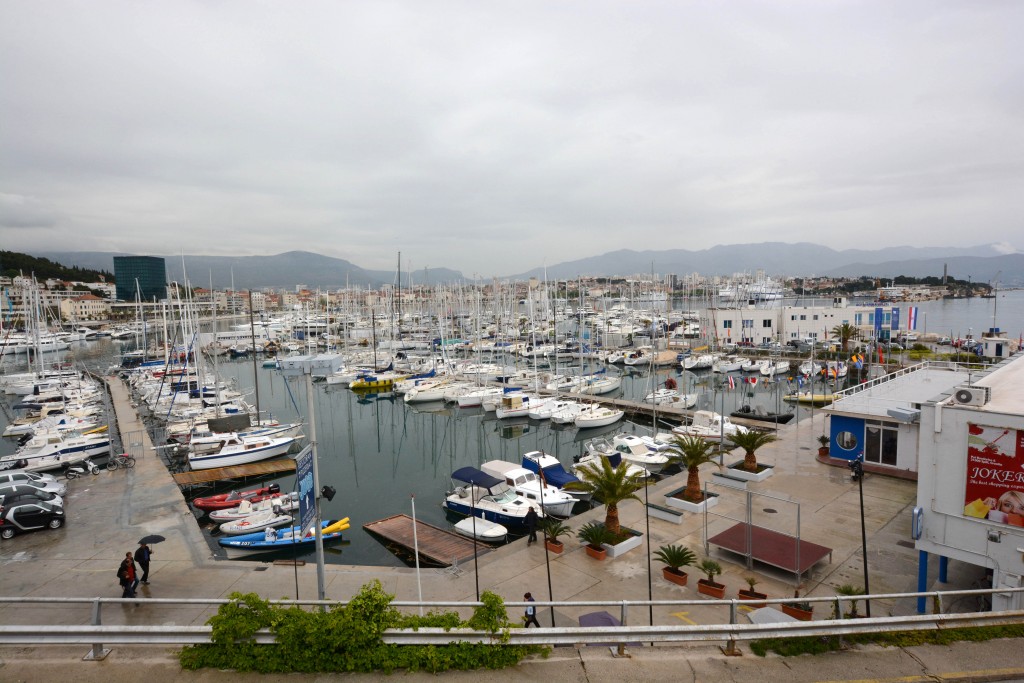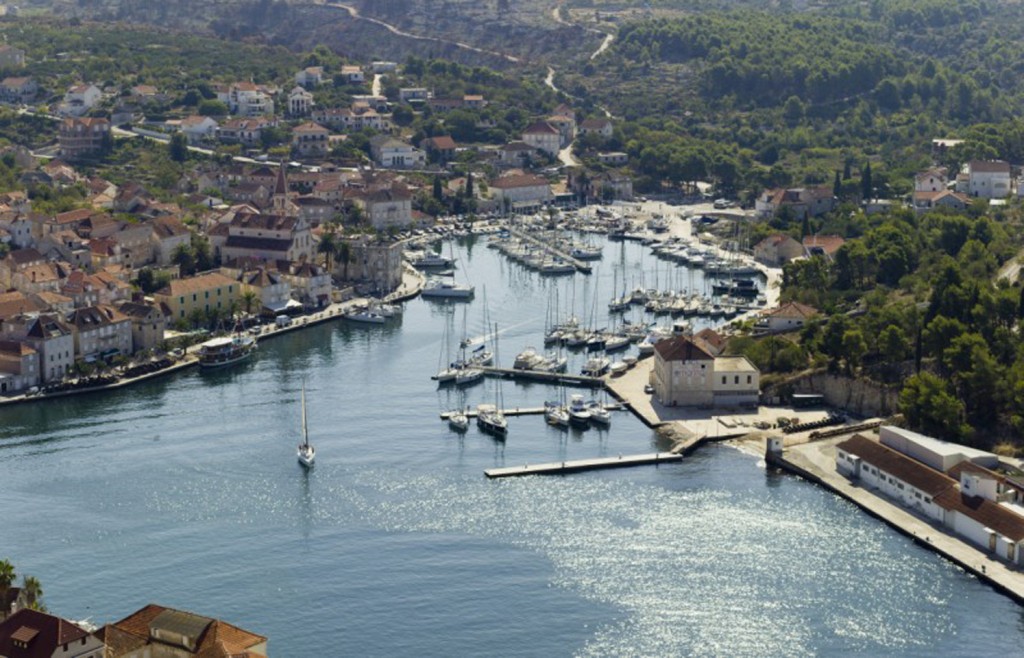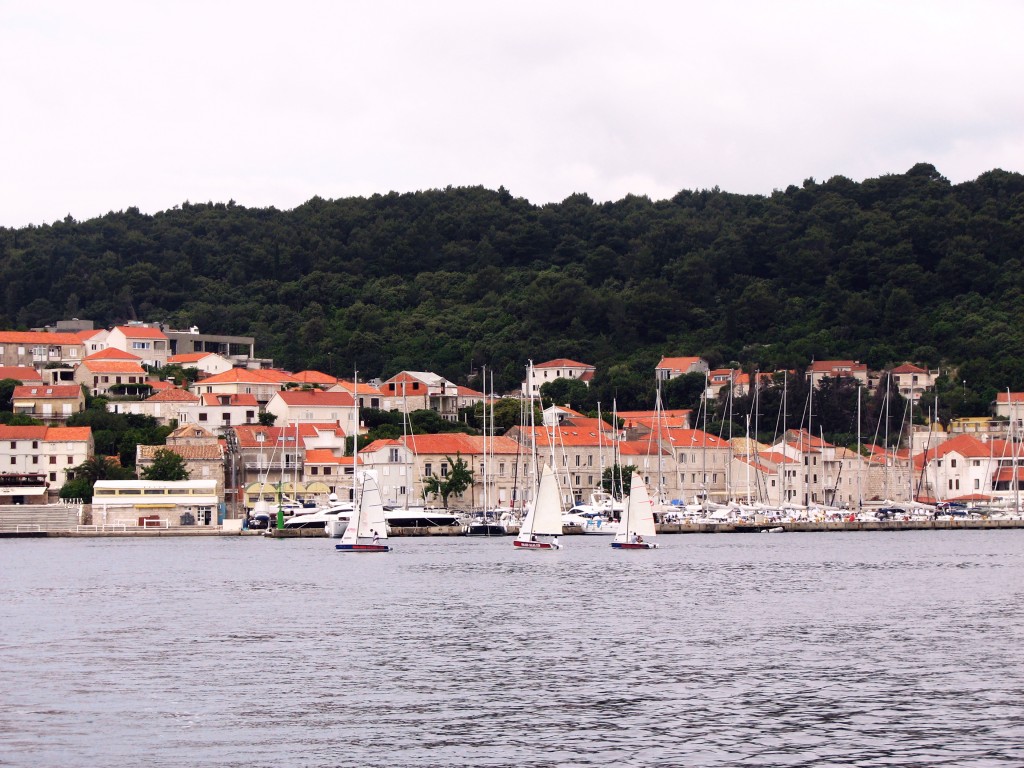Central Dalmatia – Split, Brac and Korcula

Highlights
Central Dalmatia and it’s biggest city, Split is not only central because it is in the middle of the Croatian coastline but because it is the biggest city of all the Croatian Adriatique and the second most important and biggest city of all the country. Many come to Split to start their Croatian sailing adventures, yacht charter holiday and because of it’s location, which is ideal to start trips from here to visit Milna Brac, Hvar, Korcula, Primosten, Zadar, Sipan and Dubrovnik.
When to visit Croatia
The cruising season opens on Easter but the peak season starts in mid-July when lot of Italian and german yachts invade the coast. During peak season it is often necessary to arrive early to find a berth, and you’ll need a back up plan in case your first choice is full. In the third week of August the visitors disappear just as quickly, leaving the area to the Germans and Austrians who have different holiday times than in southern european countries. All is quiet again through September and October. The most important marinas – where to go
Split

If there is no space in the busy ACI marina (layup ashore and afloat – book ahead!) and you do not want to risk the lack of security on the busy quay, you can easily visit from Marina Kastela North of Split. The city of Split emerged from a settlement around a palace built by Roman emperor Diocletian, and the city was also important within Yugoslavia. Many of the top sights are within easy walking distance of each other, mostly in or nearby the Diocletian’s Palace area. The palace complex is the most important sight in Split.
POI# The Cathedral of St Domnius (Katedrala Sveti Duje) is on the eastern side of the Peristyle. Originally built – at the same time as the palace – as a mausoleum for Emperor Diocletion (who died in 313 AD), his remains vanished a few centuries later, when the city was attacked. POI# The belltower of the Cathedral is well worth climbing for its views over Split, out to sea and inland. On the western side of the Palace is the People’s Square (Narodni trg) on which is the old town hall which was built in the 15th century.
Milna Brac island

Brac is the longest and most elevated island in central Dalmatia. Despite its proximity to Split, Brac is less touristed than the glittering islands of Hvar and Korcula further south. Brac is a relatively dry island; you won’t find the lush vegetation of, say Korcula or Hvar, but there are some lovely spots along the rocky shores and great scuba diving from Lucice Bay. Don’t miss the olive oil in Brac. The olives are of a rare variety called buhavica and there’s over a half- million trees that were planted by the Venetians in the 17th century. The island is also famous for its white stone which was used in the construction of Diocletian’s palace.
Hvar
The city of Hvar is a unique fusion of mediterranean nature, rich cultural and historical past and tourist present. It is situated in picturesque nature, facing the sea. Hvar is an inexhaustible treasury of the scenery, atmosphere and adventure. Hvar gained glory and power during middle ages being an important port within the Venetian, naval empire. Today, it is the centre of island’s tourism in Croatia and one of the favourite destinations of the Dalmatian riviera. Anchorages, that the city of Hvar offers are in port of Hvar and in ACI Club Palmižana on Pakleni Otoci. When docked in the city harbour you can enjoy in day and night atmosphere of the town. Pakleni otoci are one of the favourite nautical destinations on the Adriatic. Palmižana marina is situated in an attractive lagoon on the St. Clement island.
Korcula
The central-Dalmatian island of Korcula stretches parallel with the nearby mainland in the west-east direction. It is almost 47 km long, its average width is 5.3 to 7.8 km, and is the sixth largest Adriatic island. The Peljesac Channel, which separates it from Peljesac peninsula, is 1,270 m wide at its narrowest point. The shoreline of the Korčula island is 182 km long, and the shorelines of the nearby islets another 54 km. Korcula is very indented with a large number of bays and coves, which makes it ideal for anchorages. Its north shore is rather low and easily accessible with several natural harbours sheltered from the jugo and easterly winds: Korcula, Banja, Racisce, Vrbovica, Babina, Prigradica. The south shore is more indented but steep in places, with cliffs rising up to 30 m out of the sea. There are many anchorages and bays sheltered from the northern but open to the southern winds: Zavalatica, Rasohatica, Orlandusa, Pavja luka, Pupnatska luka, Prizba, Grscica, Brna etc., and is sheltered from both the bora and the jugo. The island also includes the towns of Vela Luka and Blato and the coastal villages of Lumbarda and Racisce, and in the interior Zrnovo, Pupnat, Smokvica and Cara. Like most of the Croatian islands, the Greeks, who gave it the name Korkyra Melaina or ‘Black Corfu’ for its
dark and densely wooded appearance, first settled Korcula, in the 6th century before Christ, at first next to today’s Vela Luka.
Tips for sailing trips
7-day trip from Split to Zadar
Day 1. Split to Trogir
Day 2. Primosten
Day 3. Skradin (near the National Park & waterfalls of Krka)
Day 4. Zakan (Kornati islands National Park)
Day 5. Isolated bay in Kornati islands National Park
Day 6. Telascica (Kornati islands National Park)
Day 7. Zadar
7-day round trip starting and arriving in Split
Day 1. Split to Maslinica (island of Solta)
Day 2. Skradin (near the National Park & waterfalls of Krka)
Day 3. Island of Kaprije
Day 4. Telascica (Kornati islands)
Day 5. Vodice
Day 6. Primosten
Day 7. Split
14-day trip from Split, finishing in Trogir
Day 1. Split to Lucice (island of Brac)
Day 2. Bol (island of Brac) & Vrbovska (island of Hvar)
Day 3. Port of Hvar on island of the same name
Day 4. Scedro (just off island of Hvar)
Day 5. Port of Korcula on island of the same name
Day 6. Pomena (island of Mljet)
Day 7. Sipan
Day 8 & 9. Dubrovnik
Day 10. Sapemanuelra (island of Mljet) & Skrivena Luka (island of Lastovo)
Day 11. Kopist (island of Lastovo) & Susac
Day 12. Bisevo & Komiza (island of Vis)
Day 13. Visoki Skoji & port of Vis (both on island of Vis)
Day 14. Trogir
7-day trip from Split to Dubronik
Day 1. Split to Milina (island of Brac)
Day 2. Hvar
Day 3. Komiza (island of Vis)
Day 4. Port of Korcula on island of the same name
Day 5. Pomena (island of Mljet)
Day 6. Island of Sipan
Day 7. Dubrovnik
Useful information before leaving
The weather
Bad weather: When a cold front approaches from the west this usually means South/South-East winds starting light and, over 2/3 days, gradually increasing, veering and finally going North West as the front goes through. The process often finishes with a North East bora wind reinforced by the mountainous coast. Periods of thunderstorms are quite common in the northern Adriatic, and can be particularly violent, generating tornados where (for brief periods) winds may reach 40kts, and reverse direction in a matter of minutes as the tornado passes through.Predominant wind, the Bora: very strong, cold Northeasterly wind from the mountains from Croatia and Trieste. It could be a a seriuos threat to navigation but in summer there is very little chance of Bora winds. During winter there is a bigger chance for a Bora that usually lasts 12 hours, maybe 2 days with local gusts up to 40, 60 knots. For more on the Bora, visit Weather Online http://www.weatheronline.co.uk/reports/wind/The-Bora.htm
Good weather: during the summer months it is a general consensus that the Adriatic is a light wind area. Sea breezes may reach a Beaufort5 in the afternoon that drops by night. Land
breezes my develop lighter (Beaufort3) in the morning.Predominant wind, the Jugo: Southeasterly, warm wind. It blows across the Adriatic when a cyclone develops over the Adriatic area. It brings clouds and rain. The air
pressure drops. It develops slowly and it can usually be noticed two or three days in
advance. It usually lasts longer than Bora, five to seven days, and even longer in winter.
There is a possibility of the so called dry Jugo, when it blows for a couple of days without
bringing rain. Unlike Bora, Jugo is a constant wind that gradually gains strength.
The Mistral: Mistral is a “benevolent”, a friendly wind looked forward by especially
sailors and all those who enjoy the summer season under its breeze. Mistral is a daily
wind blowing from the northwest and created by the differences in temperature between
the mainland and sea. It is fairly frequent from spring to autumn and strongest in July
and August. It usually starts blowing around 9 or 10 in the morning, reaches its highest
strength in the afternoon and fades at sunset. Mistral is generally weaker in the north
Adriatic than in its south.
For detailed forecasts you should take into consideration that the nearby islands adiacent to the
coastline will modify the winds: winds resulting from frontal systems and pressure differentials
are likely to be as predicted when more than twenty miles off the Dalmatian coast, close to the
land and amongst islands the wind conditions may vary widely from the forecast.
Avarage wind conditions from Windfinder for Split
http://www.windfinder.com/forecast/zadar_luka
June: dominant wind dir: E; average wind speed: 4 kts; ave temp: 25 C
July: dominant wind dir: NW; average wind speed: 3 kts; ave temp: 30 C
August: dominant wind dir: W; average wind speed: 4 kts; ave temp: 28 C
Summer temperatures: Mediterranean climate characterized by warm and dry summers, mild
and pleasant winters.
The average monthly temperature in July it is 23.9°C (75°F); the average sea temperature in
summer 22.8°C (73°F).













